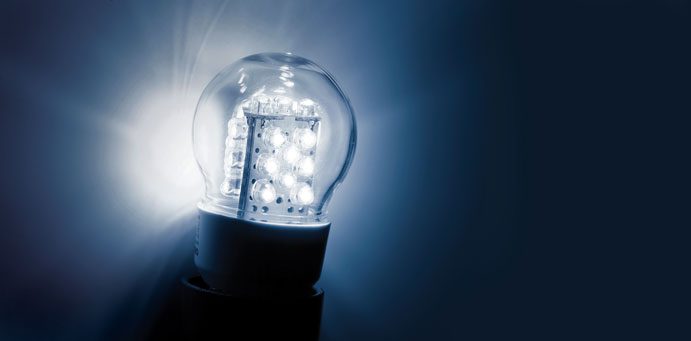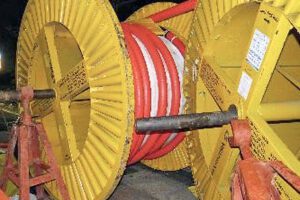In September last year, the peak body for Australia’s lighting industry released a practical guide for assessing LEDs and LED suppliers in response to growing concerns about unsafe and non-compliant product from overseas flooding the Australian market.
Lighting Council Australia’s CEO, Bryan Douglas, said that the guide has been published in response to market demand for independent information at a time of profound change in lighting technology and the lighting industry.
“While the technology has developed rapidly in recent times and there is now excellent product available, the fact remains that there are many sub-standard LEDs in the Australian market,” Mr Douglas said.
“Sadly there are also many sub-standard suppliers peddling LED wares who know little and care less about Australia’s regulatory environment for lighting products.”
“There are also many products in the market which fail to meet the performance claims of their suppliers,” Mr Douglas said.
A Guide to Choosing LED Products and Suppliers provides a checklist which includes information on safety, electromagnetic compatibility, quality, warranty, component compatibility and installation.
HOW TO CHOOSE YOUR LEDS
LEDs, with their many advantages including energy efficiency, longevity, durability and controllability, are now playing an important role in most forms of lighting.
There is excellent LED product available and solid state lighting technology is improving rapidly. However tests on LED products found in the Australian marketplace indicate a wide variation in product quality and how effectively they may illuminate a space. Some lower quality LEDs sold may not provide sufficient light, may flicker when dimmed, change colour through life or fail prematurely.
The following guide developed by Lighting Council Australia shows both mandatory compliance (safety, warranty and EMC requirements) together with key voluntary aspects, such as product performance.
Assessment of performance is somewhat more subjective than mandatory compliance. In assessing performance some users may decide brand alone is sufficient, or they compare the supplier’s claims on the product specification sheet or brochure to an increasingly stringent survey of available information. The most common method for assessing LED performance is a photometric test report. This will usually use the LM79 test method; however certification of product under Lighting Council Australia’s Solid State Lighting Quality Scheme, or registration on a state government rebate scheme, will provide increased confidence in the product and the supplier.
The checklist, which covers both products and suppliers, is divided into the following areas:
- Safety and EMC compliance
- Performance
- Independent verification of performance
- Quality
- Warranty
- Component compatibility
- Installation
SAFETY/EMC COMPLIANCE SAFETY
SAFETY
Safety(1) Suppliers of in-scope electrical equipment (this includes suppliers of LEDs) should be registered on the National Database** of the Electrical Regulatory Authorities Council. As part of the registration process, ‘Responsible Suppliers’ make a declaration that the equipment they sell meets relevant standards and is electrically safe.
Safety (2) LED drivers that are external to the luminaire are considered high risk items by Australia’s electrical safety regulators and suppliers are required to hold a Certificate of Approval (CoA) and mark the driver with the RCM or NSW approval number. CoAs are listed on the National Database.
Note:
- It is illegal to place an electrical product on the Australian market with no marking (must contain brand, voltage etc.).
- . The mark has no legal status in Australia. Check registration of supplier and external LED driver at www.erac.gov.au.
From 1 March 2013 the Regulatory Compliance Mark (RCM) is required on all products. Prior to this date most luminaires were not marked with the RCM.
The RCM has been required for many years on all external LED drivers. Ask for a copy of the Certificate of Approval for the external driver.
EMC
All LED luminaires and lamps require EMC compliance. This is established by test reports. The supplier should be able to provide a supplier’s Declaration of Conformity (DoC).
Check that the product carries the RCM (if placed on market after 1 March 2013) or C-Tick mark (if placed on market before this date).
PERFORMANCE
TOTAL POWER(WATTS)
The total input power of a luminaire is a measurement of all power consumed by the LED, the driver and the internal electronics. Also known as light circuit power (LCP).
Sadly there are also many sub-standard suppliers peddling LED wares who know little and care less about Australia’s regulatory environment for lighting products.
To understand energy consumption it is important to determine the total input power. Luminaire performance is shown in a test report, usually to LM-79*, or on the SSL Quality Scheme label. Compare with claims shown on the product specification sheet.
Request a copy of the following:
- SSL Quality Scheme label
- State rebate scheme documentation
- LM-79* or LCP test report.
TOTAL LUMINOUS FLUX (LUMENS)
Total light output of a luminaire (measured in lumens) should not be confused with the light output of the LED light engine which invariably is greater than the light output of the luminaire.
Request a copy of the luminaire’s LM-79 test report* or SSL Quality Scheme label.
LUMINOUS EFFICACY
(LUMENS PER WATT)
Efficacy is a measure of how efficiently a luminaire uses power to produce usable visible light. It is the ratio of luminous flux to power and is expressed as lumens/ Watt (lm/W). The higher the lm/W the more efficient the luminaire.
NOTE:
- Light distribution is also very important in deciding the correct luminaire for an application.
- Most reflector lamps measure light output in candelas, hence efficacy (lumens/Watt) may not be available.
Efficacy can be calculated by dividing total luminous flux by the total power (e.g. 10,000lm/100W = 100lm/W).
INDEPENDENT VERIFICATION OF PERFORMANCE
DOES THE PRODUCT CARRY THE SSL QUALITY SCHEME LABEL?
Lighting Council Australia has introduced a voluntary labelling scheme to validate the performance claims of suppliers. Called the Solid State Lighting (SSL) Quality Scheme, the label associated with qualifying products lists the following critical luminaire characteristics:
- energy efficiency
- light output
- colour temperature
- colour rendering index
- dimmability
Lighting Council Australia introduced the labelling scheme because of the large number of LED products in the marketplace which fail to match the performance claims of their suppliers.
Look for the SSL Quality Scheme label. Check at: www.lightingcouncil.com.au
HAS THE LUMINAIRE BEEN REGISTERED WITH AN APPROVED STATE GOVERNMENT REBATE SCHEME
LED luminaires registered with a state government scheme have had their product testing scrutinized before approval. This is independent of the manufacturer. (Note that the Victorian government’s VEET scheme is due to be phased-out by the end of 2015.)
Check the product listing online on each of the NSW and Victorian government schemes:
IPART – www.ess.nsw.gov.au
VEET – www.veet.vic.gov.au
QUALITY
LUMEN MAINTENANCE (LONGEVITY)
The light output of all light sources depreciates with use. Lumen maintenance is the term used when measuring this decay. The lumen maintenance (L70) value is a prediction of the number of hours an LED light source will operate before its light output falls below the point at which the decay is easily noticed; the value is 70% of initial light output. It corresponds to the practical end-of-life for the LED chip itself. While many use the L70 value as the life of the luminaire since it is expressed as a large number, for example 50,000 hours, it is not luminaire life. Luminaire life is determined by the weakest component – perhaps the power supply or failure of water proofing. Luminaire life may be considerably shorter than the L70 value claimed.
To verify lumen maintenance request a copy of the LM-80* results and TM-21* report. L70 is calculated from LM-80 results and a TM-21 report.
CORRELATED COLOUR TEMPERATURE (CCT)
Colour temperature describes the colour appearance of light and is measured in degrees Kelvin (K). CCT is an indication of how good an object’s colour appears under the light.
Colour temperatures recommended for different interior lighting applications are shown in AS/NZS 1680.1.
- 3000K is considered a ‘warm’ colour
- 4000K is ‘neutral’ or ‘cool white’
- 5000K is a ‘cold’ or daylight colour.
Request a copy of the LM-79* test report or SSL label to determine CCT.
The Australian/New Zealand Standard AS/ NZS 1680.1 for interior lighting provides guidance on selecting colour temperatures for work environments.
COLOUR RENDERING INDEX(CRI)
CRI is a measure of the colour appearance of objects. The higher the CRI, the better the quality of the light. CRI is given as a scale ranking up to 100. A CRI of 80 or higher is used in most indoor applications.
Request a copy of the LM-79* test report or SSL label to verify CRI.
WARRANTY
Warranty is a voluntary promise and is a measure of a manufacturer’s confidence that the luminaire will achieve an expected life.
Be cautious of long warranty periods. Research the company offering the warranty (will they exist in five years?) and understand the fine print.
Refer www.accc.gov.au for information on consumer rights, guarantees and warranties.
Ask the supplier to provide you with a Warranty Statement.
COMPONENT COMPATIBILITY
Reputable manufacturers provide information and guidance on their products’ compatibility with other components of the power system. This includes switches and dimming.
LEDs unsuitable for dimming may cause failures or fires if installed with dimmers.
Be cautious of long warranty periods. research the company offering the warranty (will they exist in five years?) and understand the fine print.
There are many different control systems. It is an imperative that the LED be fully compatible with any installed components. Similarly in new systems the LED driver and dimmer system must be matched for compatibility.
Some LED luminaires will have features such as:
- Constant light output to ensure the light output remains the same as the LED ages
- Colour change during dimming to match the 2700K to 1800K colour change of a dimming incandescent lamp
- Colour change capabilities – red, blue, green and every colour in between.
INSTALLATION
Reputable manufacturers provide information and guidance to facilitate correct product installation. Ask if there is there a supplier’s installation data sheet?
ELECTRICIAN
Electricians are responsible for installation safety. They should refuse to install noncompliant product.
For further information see: A Simple Question – DOES IT COMPLY? www.doesitcomply.com.au
DOES IT COMPLY? is supported by Lighting Council Australia, Standards Australia and other organisations.
Ensure the electrician supplies a Certificate of Electrical Safety (CoES – VIC) or Certificate of Electrical Compliance (CCEW – NSW) or equivalent in other jurisdictions for the work they have performed.
PROFILE
LIGHTING COUNCIL
Australia Lighting Council Australia is the peak body representing Australia’s lighting industry. Its goal is to encourage the use of environmentally appropriate, energy efficient, quality lighting systems.
More information on A Guide to Choosing LED Products and Suppliers can be found at www.lightingcouncil.com.au.
Disclaimer: The information in this document has been prepared in good faith by Lighting Council Australia. It is not intended to constitute advice and professional advice should be sought before relying on this information. Lighting Council Australia does not warrant the accuracy of the information and to the extent permitted by law disclaims responsibility for any loss or damage which may be suffered by any person directly or indirectly relying upon it, whether such loss or damage is caused by any fault or negligence of Lighting Council Australia or otherwise.
* LM-79, LM-80 and TM21 are methodologies developed by the Illuminating Engineering Society of North America. They have become default world standards for testing and assessing various aspects of LEDs. LM-79 provides internationally accepted procedures and precautions for performing reproducible photometric, colour and electrical characteristics on complete LED luminaires. Aspects commonly used in Australia include total power, total luminous flux, efficacy, CCT and CRI. LM-80 provides test criteria to measure lumen depreciation of LED light sources, arrays and modules (but not luminaires). TM-21 is a mathematical method based on LM-80 data to make a lumen maintenance projection.
**The electrical safety regime in Australia is in transition. The National Database is increasingly listing suppliers and Certificates of Approval (CoA). If the supplier or supplier’s CoA is not listed, ask why not.














Add Comment